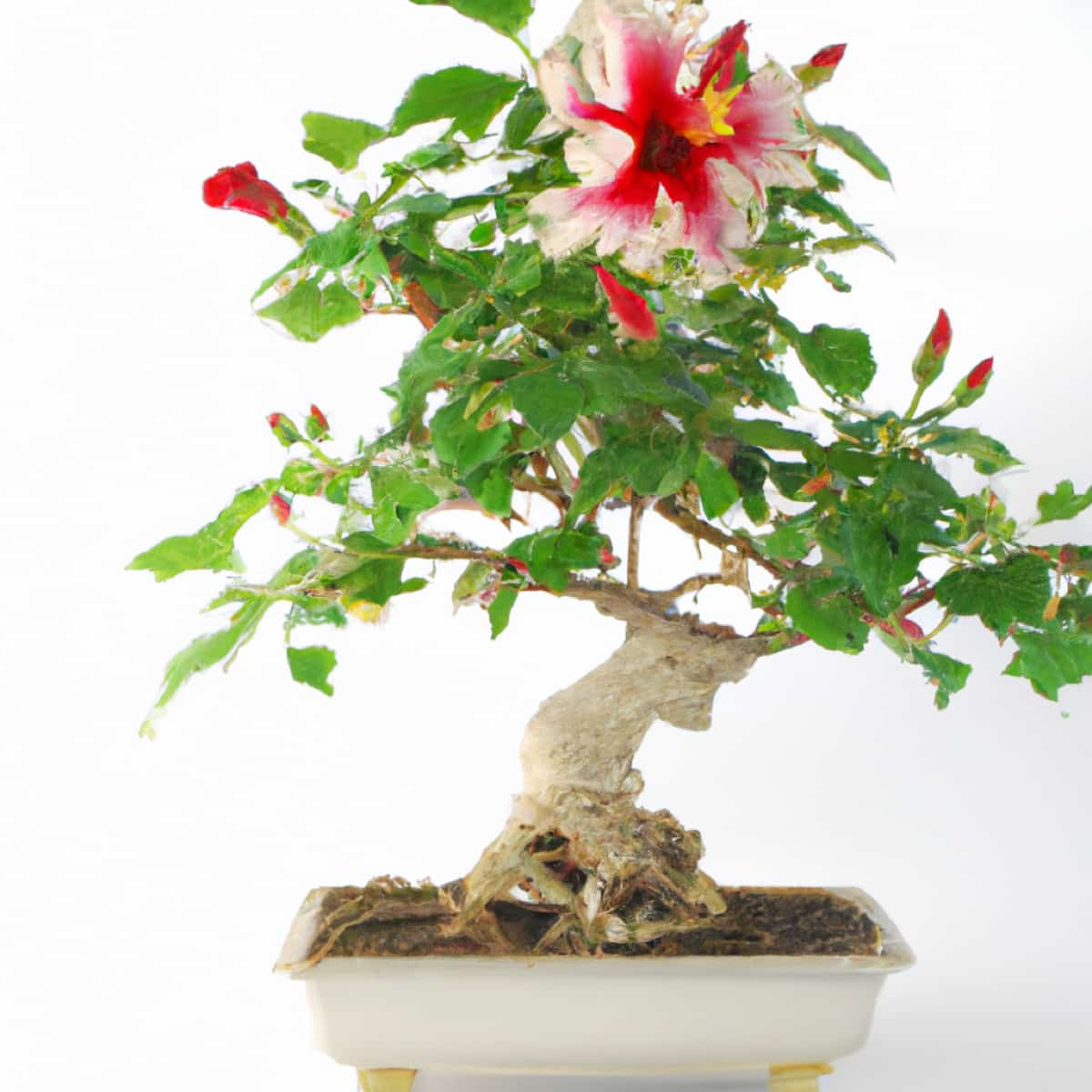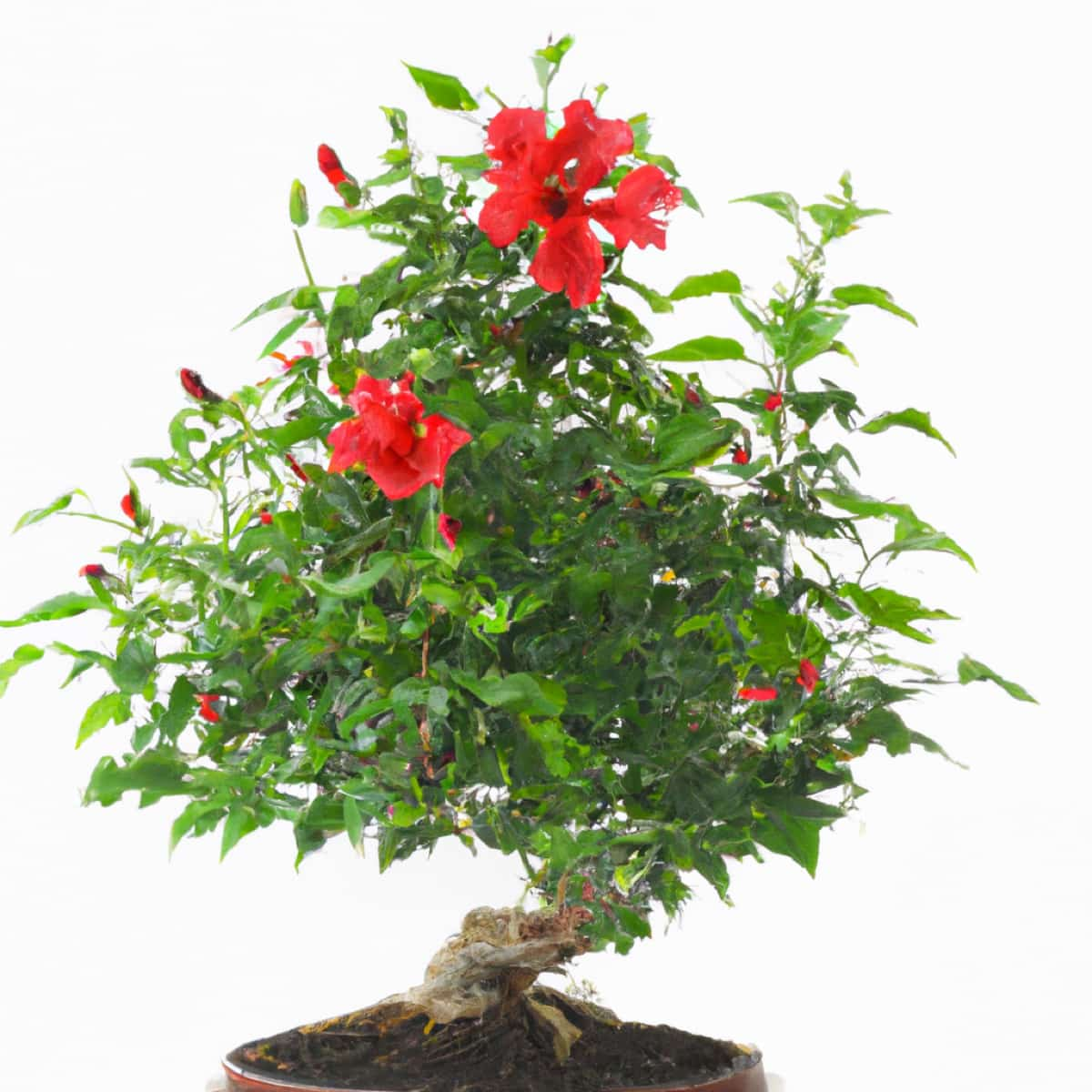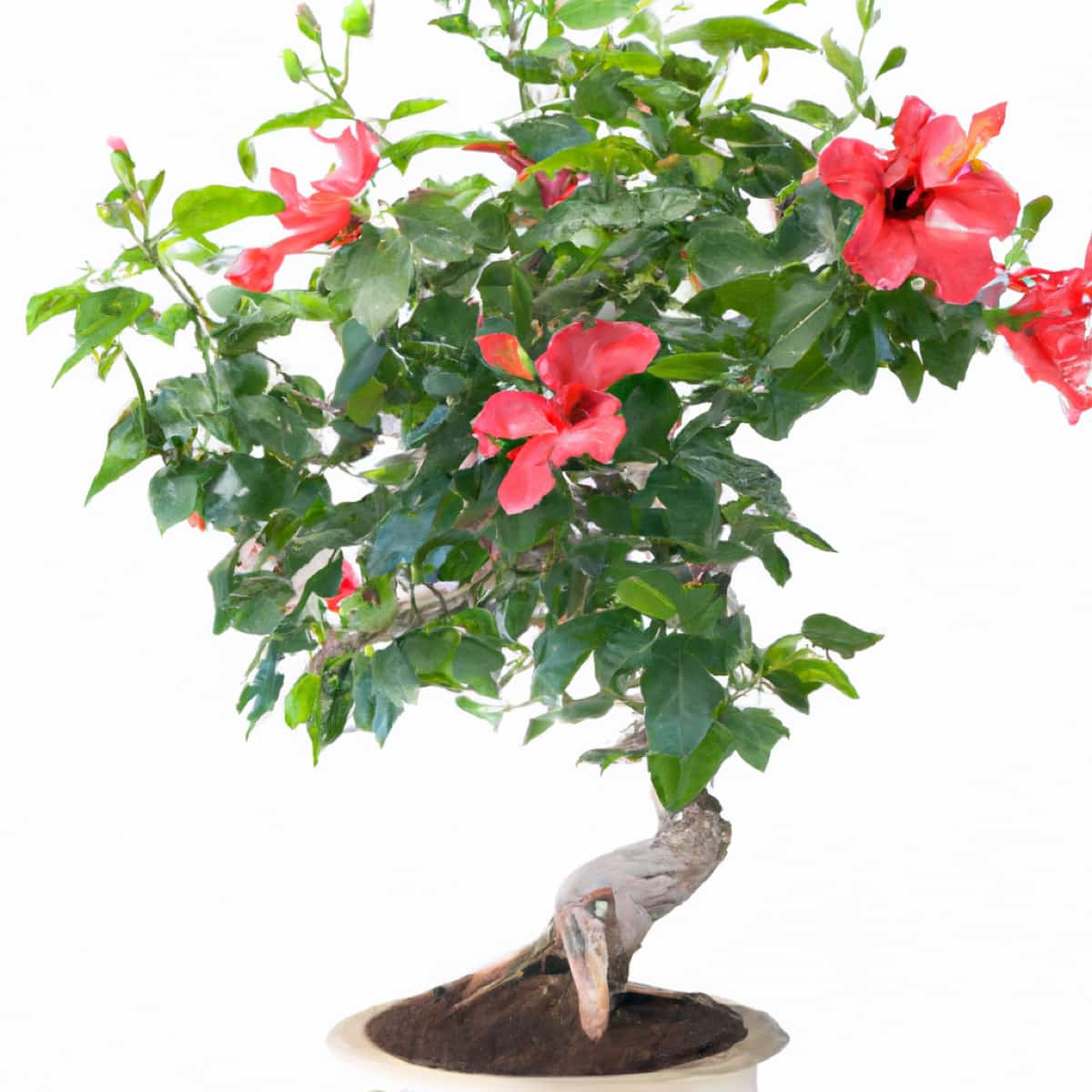The art of Bonsai dates back centuries and transcends borders with its allure of miniaturized yet matured representations of nature. The Hibiscus Bonsai tree stands out with its vibrant, eye-catching blooms and lush foliage. Growing Hibiscus Bonsai involves carefully considering several factors, from the soil for hibiscus bonsai to the pruning. This article explores the nuances of making Hibiscus Bonsai, delving into how to care for a Hibiscus Bonsai tree effectively.

How to Grow and Care for Hibiscus Bonsai
How to Plant Hibiscus Bonsai From Seeds
Beginning your Hibiscus Bonsai journey starts with planting the seeds. The selection of seeds must be done carefully, ensuring they are of the best quality to achieve optimum results. Preparing the seed involves a soak in warm water for about an hour, which hastens germination by softening the seed coat.
Planting is then conducted in a seedling tray filled with a sterile seedling mix. A light layer of the mix covers the seeds, followed by a gentle mist of water to ensure they are moist but not waterlogged. Placing the tray in a warm and brightly lit environment fosters germination, typically observable within a few weeks.
Step-by-step Guide to Growing Hibiscus Bonsai Indoors
Growing Hibiscus Bonsai indoors involves several steps. Following germination and the emergence of the seedlings, they should be allowed to grow until they are strong enough for transplantation. The first step in the transplantation process involves preparing the bonsai pot, which should have adequate drainage and be size-appropriate for the young plant. Next, the soil for hibiscus bonsai is prepared.
This soil mix is discussed in detail in the subsequent section. After preparation, the soil mix is placed in the pot, leaving space for the plant. The seedling is then carefully removed from the seedling tray, ensuring minimal damage to the roots. This delicate seedling is placed in the pot, and the remaining space is filled with the soil mix. Following transplantation, the plant should be watered thoroughly but cautiously to avoid waterlogging.
Essential Care Tips for Hibiscus Bonsai Trees
Care for a Hibiscus Bonsai tree goes beyond planting. It involves a combination of appropriate watering, light provision, proper feeding, and regular pruning. Watering should be conducted regularly but cautiously, as underwatering and overwatering can be detrimental. The provision of light is another crucial aspect of Hibiscus Bonsai care.
The trees thrive under full sunlight but can tolerate partial shade. Feeding should be conducted regularly with a balanced fertilizer, helping the tree grow and produce those brilliant hibiscus blooms. Regular Hibiscus bonsai pruning maintains the tree’s shape and promotes denser foliage and more abundant blooming.
Best Soil Mix for Hibiscus Bonsai Cultivation
The soil for Hibiscus Bonsai is critical in influencing how well the tree grows. A well-draining soil mix is paramount to prevent root rot. The ideal mix is a blend of organic potting soil, coarse sand, and perlite or pumice, typically in equal parts. This mix ensures good drainage, sufficient aeration, and adequate nutrient retention.
Pruning Techniques for Shaping Hibiscus Bonsai
Hibiscus bonsai pruning plays a pivotal role in shaping the tree. Regular pruning is recommended, particularly during the growing season. It is advisable to leave two to three leaves on each branch during pruning, which encourages the development of a dense canopy. Structural pruning, which involves shaping the tree and defining its style, should ideally be done during late winter or early spring before the onset of the growing season.
Watering Schedule for Healthy Hibiscus Bonsai Growth
A well-regulated watering schedule is vital for healthy Hibiscus Bonsai growth. Watering should be done when the topsoil feels dry to the touch but before the tree shows signs of dehydration. Too much water causes root rot, while too little water causes wilting and plant death. Balance is crucial.
In case you missed it: Frequently Asked Questions About Growing Hibiscus

Preventing and Treating Common Pests and Diseases in Hibiscus Bonsai
Hibiscus Bonsai trees are susceptible to various pests and diseases, including aphids, spider mites, and fungal infections. Prevention is always better than cure, and regular inspection of the Bonsai for signs of pests and diseases is recommended. For treatment, organic insecticides and fungicides are suggested, offering a gentle but effective way of maintaining plant health.
Understanding the Light Requirements of Hibiscus Bonsai Trees
Hibiscus Bonsai trees thrive under full sunlight, requiring at least six hours of direct light daily. However, they can tolerate partial shade. Indoor plants should be placed near a south-facing window to maximize light exposure. Artificial growth lights can supplement the plant’s lighting needs if natural light is insufficient.
Winter Care Guidelines for Protecting Hibiscus Bonsai From Cold Temperatures
Winter care is crucial in regions with cold winters as Hibiscus Bonsai trees are not frost-tolerant. They should be moved indoors before the onset of the first frost. The indoor environment should be warm and well-lit, and the watering schedule should be slightly reduced due to lower evaporation rates indoors during winter.
Repotting Hibiscus Bonsai: When and How to Do It Properly
Repotting Hibiscus Bonsai is a necessary practice, typically done every two to three years. It is ideally conducted in late winter or early spring, before the onset of the growing season. The process involves carefully removing the tree from the pot, pruning the roots, refilling the pot with fresh soil mix, and replanting the tree. Following repotting, the tree should be watered thoroughly and placed in a partially shaded area to recover.
Fertilizing Hibiscus Bonsai: The Key to Nourishing Growth
An often-overlooked step in caring for the Hibiscus Bonsai tree is the correct application of fertilizers. These essential nutrients are the building blocks for growth and the development of vibrant, healthy blooms. Fertilizing your Hibiscus Bonsai should begin a few weeks after the plant has adjusted to its new pot post-transplantation.
A balanced, water-soluble fertilizer is ideal, ensuring the tree receives equal nitrogen, phosphorus, and potassium, the primary macronutrients required by plants. However, Hibiscus Bonsai trees also thrive with a slightly higher proportion of potassium, which aids in flower production. A bi-weekly application during the growing season (spring to autumn) is generally recommended. The fertilizer should be applied after watering to avoid root burn.
During winter, fertilizing can be reduced to once a month or even stopped entirely as the plant’s growth slows down in colder conditions. Remember, less is often more when it comes to fertilizing. Over-fertilization can lead to fertilizer burn and harm the plant. Always follow the manufacturer’s instructions and observe your tree’s response to the fertilizer. Healthy growth and a plentiful bloom are signs that your Hibiscus Bonsai is receiving the nutrients it needs to flourish.
In case you missed it: 8 Causes of Dying Hibiscus Plants and How to Fix Them?

Conclusion
Growing and caring for a Hibiscus Bonsai tree involves understanding its needs and catering to them meticulously. Every step, from the soil mix to the pruning practices, is important in ensuring a healthy, blooming Bonsai Hibiscus tree. With patience, practice, and passion, a beautiful Hibiscus Bonsai can grace your living room or garden, offering a touch of nature’s elegance in miniature form.
- Ultimate Guide to Ossabaw Island Hog: Breeding, Raising, Diet, and Care
- Ultimate Guide to Juliana Pig: Raising Facts, Size, Diet, Care, and Lifespan
- Raising Lleyn Sheep: Disadvantages, Price, Uses, Characteristics, and Care
- Ultimate Guide to Meishan Pig: Breed Facts, Breeding, Raising, and Care
- Ultimate Guide to Teacup Pigs: Raising, Diet, Lifespan, Cost, and Care
- Guide to Raising Poll Dorset Sheep: Facts, Profile, Characteristics, Uses, and Care
- Ultimate Guide to Bighorn Sheep: Characteristics, Diet, Lifespan, Breeding, and Lifecycle
- Ultimate Guide to Raising Katahdin Sheep: Farming Facts, Breed Profile, Uses, and Care
- Ultimate Guide to Raising Oreo Cows: Belted Galloways Farming Facts, Profile, Uses, and Care